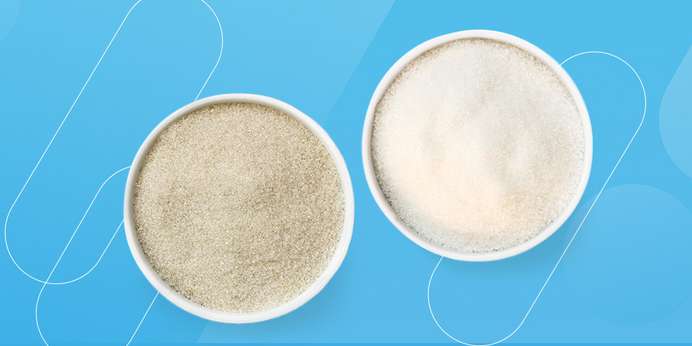1. Know What Type of Sugar You’re Measuring
All sugar comes from the same two plants — sugar beet and sugar cane. However, between processing and additional ingredients, the end result of each type of sugar delivers a vastly different product. This is especially clear when you're aiming to measure the color of sugar, as visual appearance is one of the main reasons many consumers choose one type of sugar over another.
While types of sugar can be broken down into dozens of types, there are three main distinctions we'll use — white, brown, and liquid sugar.
2. Understand the Differences Between White and Brown Sugar
White and brown sugar are the sugars Americans are most used to. But if they come from the same plant, how can they look so different on the shelves?
Both sugars start off as white sugar. To get brown sugar, the manufacturer mixes it with molasses. This gives the sugar slightly different taste notes and additional nutrients like potassium and calcium, along with that telltale darker color.
Though brown sugar offers a more nutrient-dense alternative, most recipes (and coffee orders) use white sugar. Even a hint of off-white in your batches can leave people wondering if they've purchased an inferior product, leading them to purchase competitor brands the next time they find themselves in need of sugar.
3. Learn How to Measure Sugar Properly for Color Gauging
As such, it's vital to the longevity of your brand that your white sugar color measurement is precise every time. Measuring color is a scientific process, so you need a detailed testing process that takes factors such as lighting, background, and sample size into account.
Every time you measure color, use the same precision you would if you were baking a cake. Use dry measuring tools to scoop up your sample, ensuring there aren't any lumps as you do. Then, level your measuring device with a straight edge before introducing your spectrophotometer or other color measurement tool.


